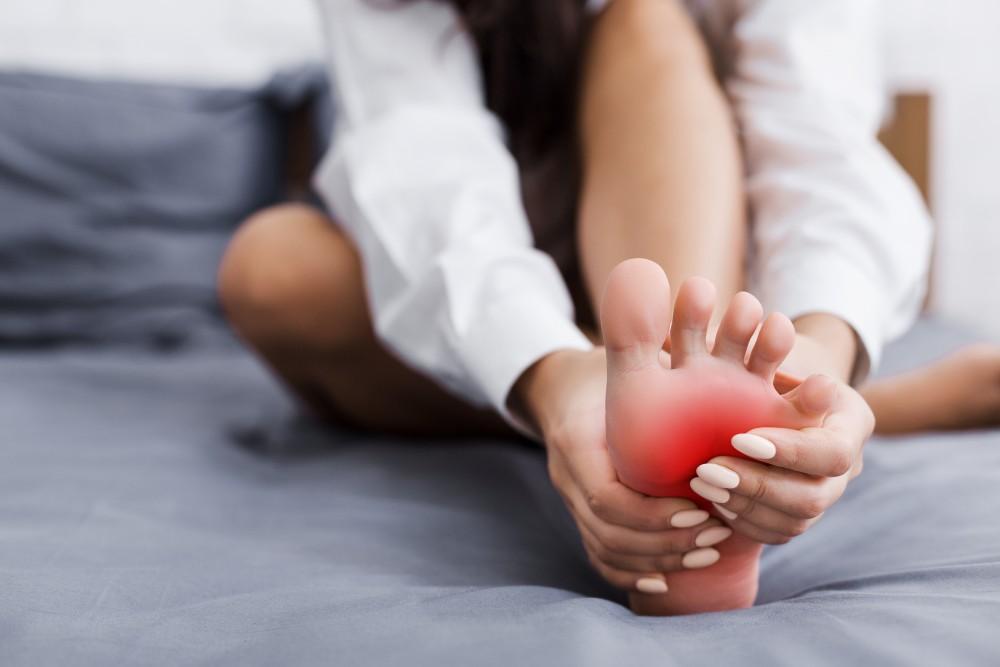
Podiatherm for Plantar Fasciitis: Can It Help?

If you feel like someone is plunging daggers into your heels and the arches of your feet, or putting a match to them, you’re likely suffering from plantar fasciitis. It’s a debilitating condition that’s usually at its worst first thing in the morning, but can also be awful after you stand for a period of time or rise after sitting for a while.
A staggering 2 million people per year are diagnosed with plantar fasciitis, so that’s a lot of misery.
The invested and caring podiatry team at Premier Foot & Ankle treat many foot and ankle conditions, and offer diverse, advanced treatments for plantar fasciitis sufferers from their eight Texas locations.
The not-so-fun facts about plantar fasciitis
Plantar fasciitis is tricky because you might feel nothing while you’re standing, walking, or exercising, but be in agony afterwards, impaired by pain, throbbing, burning, and tingling.Your calves may also feel constricted or stiff.
Risk factors include:
- Performing work that requires you to be on your feet a lot
- Being obese
- Wearing shoes with insufficient support
- Having a history of foot, ankle, or leg injury
- Being middle aged and older (age 40-60)
- Performing certain types of exercise, such as running and ballet
- Having feet with high arches, flat feet, or an irregular walking style
Unfortunately, putting off seeking treatment usually leads to worse symptoms and limited mobility, and that’s no way to live.
Physiologically, when you have this condition, your plantar fascia, a strong band of tissue that extends from your heel to your toes, gets stretched beyond its ability. Tiny tears are created in your tissue, and this starts a cascade of swelling and pain.
If you’ve had plantar fasciitis for a while, you can develop heel spurs as well. These are calcium deposits that emerge in the place where your heel bone and fascia meet. In addition to pain and inflammation, they cause the front part of your heel to swell and even feel warm.
The discomfort sometimes extends to your arch, and you might even see a bone-like lump on your foot. To eliminate these issues and stop things before they get worse, get your plantar fasciitis treated by our Premier Foot & Ankle team.
What can alleviate plantar fasciitis pain?
We offer diverse treatments for plantar fasciitis, and your specialist determines which one is best for you after learning your medical history, hearing your symptoms, and determining the severity of your condition. They may take imaging tests to learn more as well.
Noninvasive treatments like physical therapy, custom orthotics, and ice therapy may do the trick to alleviate your pain, but if that’s not enough, we offer advanced treatments that are truly cutting-edge.
One such treatment is Podiatherm, a revolutionary therapy that tackles nerve-related pain by employing radiofrequency (RF) energy. We direct the treatment at your foot’s peripheral nerve, and, amazingly, it’s rendered incapable of transmitting pain.
A Podiatherm treatment is done in the Premier Foot & Ankle office. Prior to treatment, your specialist administers a local anesthetic to numb your treatment area. They insert a very thin needle into the location on your foot where your pain is the worst. An ultrasound image may be needed to guide them sufficiently.
To ensure that the needle delivers the RF energy into precisely the right place, your podiatrist briefly stimulates your nerve. Typically, you receive the treatment in several spots as a safeguard, so there’s no chance you won’t experience great relief from your plantar fasciitis pain. This means you receive additional anesthesia where needed.
After your treatment, we gently wrap your feet in gauze.
Podiatherm’s results are impressive — and fast
Fortunately, there are no limitations on what you can do following your Podiatherm treatment. Although some patients experience tenderness for one to several days, some who have received Podiatherm treatment participate in vigorous physical activity almost right away. Your peak pain relief, however, arrives at about one month to six weeks post-treatment.
If you’ve gotten used to the chronic pain of plantar fasciitis, the trouble walking, and just feeling discouraged emotionally, get ready for a dose of joy as you start to move freely, without pain and burning. In addition to plantar fasciitis, Podiatherm is used to treat neuromas.
Your results can be permanent, or your nerve may regenerate after a couple of years — but even then your pain may not return at all. If it does, you can receive another Podiatherm treatment.
Another important fact about Podiatherm? It can keep you out of the operating room (though we do offer surgical solutions to address foot conditions)!
Call the Premier Foot & Ankle office most convenient to you to schedule an appointment to learn more about Podiatherm, or request an appointment online today.
You Might Also Enjoy...


How Does Vascular Testing for PAD Work?

How Foot Symptoms Are Indicators of Whole-Body Health

Lapiplasty: How 3D Bunion Correction Works

How to Get to the Root of Your Chronic Heel Pain


